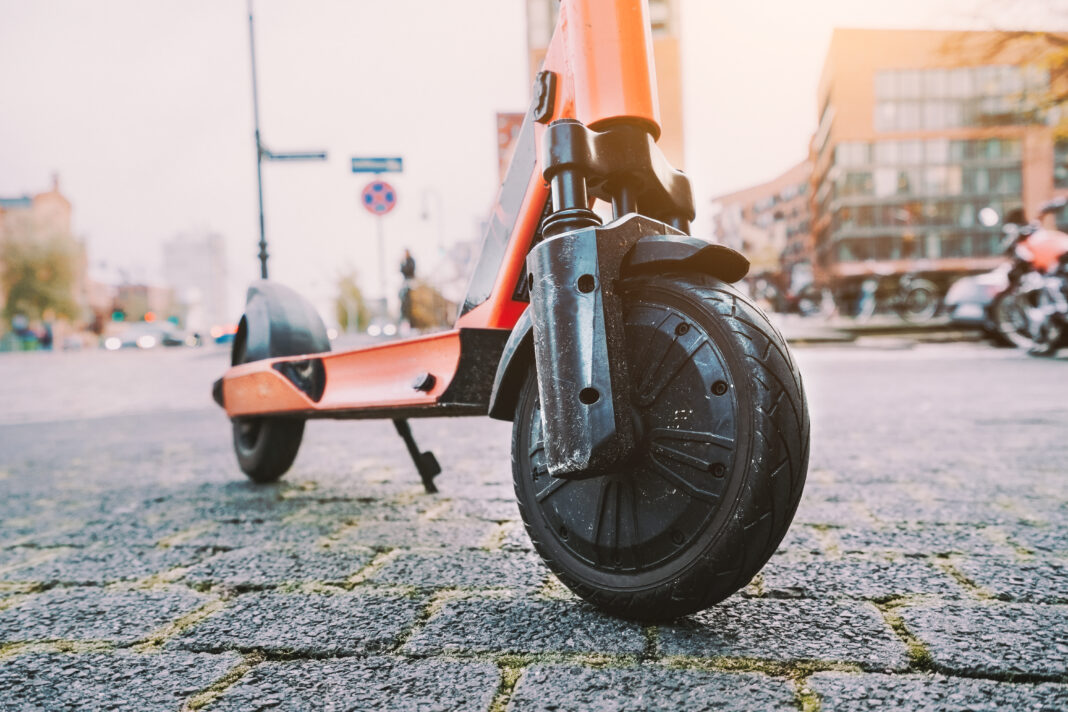Urban transportation has entered a new era defined by efficiency, sustainability, and intelligence. With growing populations and limited infrastructure, cities around the world face unprecedented congestion and environmental challenges. This has led to the rise of micromobility—lightweight, electric, and flexible transport solutions designed for short trips. Among the innovators reshaping this field, the Superpedestrian scooter stands out for its unique self-repair technology and data-driven operation. The company’s mission goes beyond mobility; it aims to create smarter streets and cleaner cities.
The Superpedestrian scooter represents a fusion of robotics, artificial intelligence, and environmental consciousness. While many scooter startups focus on speed and expansion, Superpedestrian’s approach revolves around longevity and self-sufficiency. Its self-repair system enables scooters to automatically detect, diagnose, and often correct hardware or software faults without manual intervention. This dramatically reduces downtime, operational costs, and electronic waste. In an industry often criticized for disposable vehicles and unsustainable practices, Superpedestrian has positioned itself as a pioneer in responsible innovation.
Micromobility adoption continues to grow, but managing thousands of scooters across urban centers is complex. Traditional models depend heavily on field maintenance crews, frequent repairs, and high replacement rates. The Superpedestrian scooter addresses these issues by embedding intelligence within each vehicle. It constantly monitors over 100 onboard sensors to detect performance anomalies and initiate corrections in real time. This self-repair technology doesn’t just improve operational efficiency—it transforms how cities integrate micromobility into their transportation systems.
This article explores the engineering, strategy, and vision behind the Superpedestrian scooter. From its founding story to the architecture of its self-repair system, we will examine how this startup has combined hardware innovation with artificial intelligence to redefine urban mobility.
1. Company Overview and Founding Story
Origins and Founders
Superpedestrian was founded in 2013 in Cambridge, Massachusetts, by Assaf Biderman, a scientist and entrepreneur from MIT’s Senseable City Lab. His vision was to merge robotics with transportation to create smarter mobility solutions. The company first gained attention for the Copenhagen Wheel, a self-contained motorized bicycle wheel that transformed any bike into an electric one. This early product established Superpedestrian’s expertise in vehicle intelligence and laid the groundwork for the Superpedestrian scooter.
Funding Rounds and Investors
Over the years, Superpedestrian has secured significant investment from leading venture capital firms and technology funds. Notable investors include Spark Capital, General Catalyst, and the MIT Media Lab. Funding has supported research into sensor integration, battery safety, and predictive diagnostics. With each funding round, the company moved closer to its vision of scalable, self-repairing micromobility.
Growth Trajectory
After its initial R&D phase, Superpedestrian transitioned to large-scale scooter deployment in 2020, launching its fleet in major U.S. and European cities. The company rapidly expanded operations while maintaining its focus on safety and durability. The Superpedestrian scooter now operates in more than 60 cities, setting new standards for reliability and smart maintenance.
Competitive Landscape
In the crowded micromobility market, Superpedestrian differentiates itself by engineering quality over quantity. While competitors like Bird, Lime, and Spin rely on high fleet turnover, Superpedestrian emphasizes lifecycle longevity. The Superpedestrian scooter can operate for multiple years with minimal servicing, thanks to its built-in self-repair capabilities.
2. Technical Architecture of the Self-Repair System
Components: Sensors, Motors, and Controllers
At the heart of every Superpedestrian scooter lies a sophisticated network of sensors. These sensors monitor parameters such as motor temperature, battery voltage, brake performance, and wheel rotation. A central microcontroller collects this data continuously, enabling instant fault detection. The sensors feed information into the scooter’s internal operating system, which then determines whether to execute self-repair actions or alert maintenance teams.
Predictive Diagnostics
Superpedestrian’s system is built on predictive diagnostics, allowing the scooter to anticipate failures before they occur. For instance, if battery cells begin to degrade, the onboard software can adjust power output to prevent damage. This level of prediction transforms maintenance from a reactive task into a proactive process, reducing breakdowns and maximizing uptime.
Autonomous Repair Mechanisms
The self-repair system performs automatic calibrations and resets in real time. If it detects a minor electrical fault or communication glitch between sensors, it can reroute functions to maintain normal operation. For more complex issues, the scooter enters a safe mode, alerting the network but remaining operational for limited use. This feature ensures rider safety while preventing sudden service interruptions.
Data Communication and Cloud Support
Each Superpedestrian scooter communicates with a centralized cloud platform. This data network aggregates diagnostic information, usage statistics, and location tracking for fleet management. Through machine learning, the platform identifies trends across thousands of scooters, improving future performance and extending fleet life. The synergy between onboard intelligence and cloud analytics defines the technological foundation of the Superpedestrian scooter.
3. Hardware Design and Engineering
Frame, Wheels, and Structural Design
Durability was a primary goal in the development of the Superpedestrian scooter. The frame is built from reinforced aluminum alloy, designed to withstand heavy use and harsh urban environments. The wheels feature shock-absorbing tires and robust suspension, ensuring stability on uneven surfaces. Every component is sealed against dust and water, reducing external wear and extending the scooter’s operational life.
Battery Technology and Power Management
Superpedestrian developed proprietary battery modules optimized for both safety and longevity. Each scooter includes multiple layers of protection against overheating, short-circuiting, and overcharging. The power system integrates directly with the self-repair software, allowing the scooter to isolate damaged cells and reconfigure energy distribution. This intelligent energy management enhances efficiency and prevents sudden power failures.
Modular Parts and Ease of Replacement
While the self-repair system reduces maintenance needs, physical wear is inevitable. To address this, the scooter’s design features modular components that can be replaced quickly. Decks, brakes, and handlebars are attached through standardized connectors. This modular architecture simplifies logistics, making the entire fleet easier to service when necessary.
Durability in Urban Settings
The Superpedestrian scooter was built with city conditions in mind. It can operate across varied temperatures, humidity levels, and terrains. The waterproofing, reinforced joints, and corrosion-resistant coatings ensure long-term reliability. Compared to earlier micromobility devices, the Superpedestrian scooter’s design significantly lowers repair frequency, aligning perfectly with its sustainability mission.
4. Software and Intelligence
Firmware and Embedded Software
The embedded software governs all interactions between hardware components. This firmware is updated regularly to enhance functionality and security. The software integrates diagnostic tools that continuously monitor the scooter’s performance, forming the brain of the self-repair system.
Machine Learning for Fault Detection
Artificial intelligence enables the Superpedestrian scooter to recognize patterns in performance data. Machine learning algorithms detect anomalies that may indicate emerging faults. Over time, the system becomes smarter, predicting maintenance needs with higher accuracy. This capability allows Superpedestrian to operate a more efficient and resilient fleet.
OTA Updates and Remote Management
Over-the-air (OTA) updates keep the fleet synchronized with the latest software improvements. Technicians can remotely install patches, security upgrades, and performance enhancements without recalling scooters to a central facility. This remote flexibility makes the Superpedestrian scooter more adaptable than traditional vehicles.
Security and Safety Protocols
Safety is deeply integrated into every aspect of the software. The system encrypts data transmission to prevent unauthorized access and tampering. If a scooter is tampered with or experiences a critical fault, it automatically locks its drivetrain and sends an alert to headquarters. These protocols maintain rider safety and fleet integrity across global operations.
5. Business Model and Monetization
Scooter Fleet Ownership vs. Subscription
Superpedestrian operates a hybrid model. It owns part of its scooter fleet while also partnering with municipalities and local operators. This flexibility allows cities to manage transportation ecosystems under customized agreements. Users access scooters through a subscription or pay-per-ride structure, depending on regional policies.
Partnerships with Cities
Collaboration with local governments has been a cornerstone of the company’s growth. Many municipalities appreciate Superpedestrian’s focus on safety and sustainability. Through partnerships, the company integrates its scooter data with public transport systems, helping cities manage congestion and improve last-mile connectivity.
Revenue Streams: Rides, Maintenance, Data
Revenue primarily comes from ride fees, but Superpedestrian also benefits from reduced operational expenses due to self-repair capabilities. Additionally, anonymized data insights offer value to city planners interested in mobility trends. This diversified income model strengthens the company’s financial sustainability.
Cost Structure and Margins
By reducing manual maintenance and extending fleet lifespan, the self-repair system significantly lowers total operating costs. Fewer replacements and less downtime translate to higher profit margins. The Superpedestrian scooter thus delivers both technological innovation and economic efficiency.
6. Operations, Deployment, and Maintenance
Deployment Strategy and Rollout
Superpedestrian’s deployment model emphasizes precision and reliability. Each city launch involves mapping ideal parking and riding zones, ensuring compliance with local laws. The company often collaborates with city planners to design safe scooter routes and charging hubs before introducing the fleet.
Field Maintenance Workflows
Although the scooters are capable of self-diagnosis, a small field team remains essential for hardware maintenance. Technicians receive automated alerts when scooters require physical attention. This targeted approach minimizes labor costs and ensures maintenance resources are used efficiently.
Logistics and Spare Parts Network
A key part of the operational framework is an optimized supply chain for spare parts. The modular design simplifies storage and distribution, allowing quick part replacements when needed. Regional warehouses keep components readily available to support ongoing city operations.
Case Studies of City Deployments
Cities such as Madrid, Los Angeles, and Austin have successfully integrated the Superpedestrian scooter into their transportation networks. Feedback indicates that self-repair technology has reduced service downtime by over 50 percent. These real-world results validate the company’s technological and operational vision.
7. Regulation, Safety, and Compliance
Local Regulations for Micromobility
Each region enforces unique rules regarding electric scooters. Superpedestrian actively collaborates with local authorities to ensure compliance with traffic and parking laws. This cooperation helps the company gain regulatory trust and secure long-term operating permits.
Safety Certification and Standards
The scooters are certified under global safety standards such as UL 2272 and ISO 9001. These certifications verify the reliability of electrical systems, batteries, and braking mechanisms. Compliance ensures that every Superpedestrian scooter meets international quality benchmarks.
Insurance and Liability Issues
Superpedestrian maintains comprehensive insurance policies that protect both riders and cities from liability claims. Its built-in safety diagnostics help document each incident, simplifying investigations and maintaining transparency.
Data Privacy and Regulation
All collected data is anonymized and encrypted. The company adheres to GDPR and other regional privacy laws. This ethical data management approach reinforces trust among users and regulators, securing the long-term sustainability of the Superpedestrian scooter.
8. User Experience and Adoption
Rider Interface and App Features
The Superpedestrian scooter app is designed to make riding intuitive, safe, and data-driven. Through a clean interface, users can locate nearby scooters, view battery levels, and plan routes with real-time updates. The app also displays safety reminders and parking regulations to ensure compliance with city policies. This focus on accessibility is a major reason why the Superpedestrian scooter has maintained strong adoption rates across multiple regions.
Incentives and Loyalty Mechanisms
To encourage frequent use, the company integrates reward systems within its app. Riders earn credits for safe driving, proper parking, and frequent rides. These gamified incentives strengthen user loyalty while promoting responsible scooter behavior. The result is a balanced ecosystem where riders are both motivated and accountable.
Handling Breakdowns and Trust
Because of the scooter’s self-repair system, mechanical issues are rare. However, when minor faults occur, riders can easily report them through the app. The scooter then performs automated diagnostics, often resolving the issue immediately. This transparency builds confidence among users who appreciate technology that actively prioritizes their safety and convenience.
Feedback Loops from Users
Rider feedback is continuously collected and analyzed. The insights gained help improve firmware updates, navigation routes, and safety guidelines. A responsive feedback system strengthens trust, allowing the Superpedestrian scooter to evolve alongside its community of riders.
9. Competitive Comparison
Rival Scooter Companies
The micromobility industry includes major players such as Bird, Lime, and Tier. These companies focus heavily on expansion speed and market penetration. Superpedestrian, on the other hand, differentiates itself through technology and safety-first design. Its scooters last significantly longer, offering superior return on investment compared to competitors.
Strengths and Weaknesses of Superpedestrian
Among its greatest strengths are engineering quality, autonomous maintenance, and strong municipal relationships. The primary challenge lies in scaling production while maintaining the same level of precision and safety. Nevertheless, the Superpedestrian scooter’s emphasis on innovation continues to attract both users and city regulators.
Where the Self-Repair Edge Lies
Superpedestrian’s competitive advantage is its ability to prevent downtime. While other fleets rely on large repair teams, its scooters self-diagnose and self-correct in real time. This technology reduces fleet management costs and improves operational efficiency. In essence, the self-repair capability is not just a technical feature but the core of the company’s business strategy.
Potential Risks and Challenges
Competition in micromobility is fierce, with constant regulatory shifts and changing consumer trends. The Superpedestrian scooter must also manage risks related to supply chains, software security, and international expansion. However, its focus on durability and data analytics positions it well for long-term stability.
10. Impact on Urban Mobility and Sustainability
Emissions and Environmental Benefits
The electric powertrain of the Superpedestrian scooter eliminates tailpipe emissions, directly contributing to cleaner city air. Each ride replaces short car trips, reducing congestion and carbon output. As cities move toward greener infrastructure, these scooters play a vital role in achieving sustainability targets.
Reducing Waste and Extending Lifecycle
The self-repair technology dramatically extends the lifespan of each scooter. Fewer replacements mean less electronic waste, a problem that has plagued early micromobility programs. The sustainability advantage of the Superpedestrian scooter goes beyond its electric nature—it minimizes manufacturing waste and reduces landfill impact.
Integration with Public Transport
Superpedestrian collaborates with cities to integrate its scooters into broader transit systems. Riders can use scooters for the first or last mile of their journey, connecting seamlessly with buses, subways, or trains. This integrated mobility vision aligns with modern smart city strategies and insights available at insights.
Social Inclusion and Accessibility
Affordable pricing and easy app access make the Superpedestrian scooter inclusive for a wide demographic. The company is also exploring adaptive scooter designs for users with physical limitations. By emphasizing inclusivity, it ensures that sustainability and mobility remain accessible to all.
11. Challenges and Risks
Technical Limitations and Failures
Even with advanced technology, complete automation is not foolproof. The self-repair system may occasionally fail to address complex mechanical issues. Ensuring redundancy and ongoing firmware updates remains critical to maintaining fleet reliability.
Scaling Hardware and Supply Chain
As global demand increases, sourcing materials and managing production present logistical challenges. The company must continue optimizing supply chains and maintaining quality control to sustain international growth.
Regulatory Hurdles in New Markets
Different regions impose unique rules for e-scooter operation, including insurance requirements, speed limits, and parking restrictions. The Superpedestrian scooter team must adapt to each market’s regulations without compromising safety or brand consistency.
Competitive Disruption
The rise of autonomous and hybrid micromobility startups may challenge Superpedestrian’s market share. To stay ahead, the company continues investing in AI, user experience, and predictive analytics to strengthen its leadership position.
12. Future Prospects and Innovations
AI-Driven Fleet Autonomy
The next evolution of the Superpedestrian scooter will focus on increased autonomy. AI systems may enable scooters to reposition themselves for optimal distribution across cities. Such capabilities will further reduce operational costs and enhance fleet efficiency.
Advanced Predictive Maintenance
By combining fleet-wide analytics and real-time monitoring, predictive maintenance will become even more precise. The scooter will learn to anticipate part wear weeks in advance, minimizing manual intervention.
Expansion into New Mobility Forms
Superpedestrian plans to expand beyond scooters into electric bikes and small delivery vehicles. The same self-repair technology can be adapted for other micromobility forms, broadening its impact across multiple transportation segments.
Global Market Expansion
Emerging markets in Asia, South America, and the Middle East represent major opportunities. As cities in these regions struggle with congestion and pollution, the Superpedestrian scooter can offer a scalable, sustainable alternative for short-distance travel.
13. Strategic Recommendations
Focus Markets and City Partnerships
Superpedestrian should prioritize cities that emphasize sustainability and digital infrastructure. Deep partnerships with municipal agencies will ensure long-term contracts and public trust.
R&D Investments
Continued investment in software development and battery innovation is essential. Research into lighter materials, faster charging systems, and smarter diagnostics will keep the Superpedestrian scooter ahead of competitors.
User Community Engagement
Building a strong user community enhances brand loyalty. Hosting safety workshops, contests, and social initiatives can transform riders into ambassadors for the brand.
Risk Mitigation Strategies
To safeguard its future, Superpedestrian should maintain diversified suppliers, strengthen cybersecurity protocols, and build data redundancy systems. Proactive management will prevent disruptions and sustain operational resilience.
14. Implementation Roadmap
Short-Term (1–2 Years) Priorities
Immediate goals include expanding to additional cities, optimizing the fleet’s self-repair system, and improving customer experience through app updates.
Medium-Term (3–5 Years) Goals
In this phase, Superpedestrian should focus on global expansion, deeper integration with public transport, and AI-driven fleet automation. Establishing regional headquarters will support localized operations.
Long-Term Vision (Beyond 5 Years)
The long-term vision for the Superpedestrian scooter is a fully autonomous, self-sustaining mobility ecosystem. Scooters will operate, charge, and maintain themselves with minimal human oversight.
Continuous Evaluation and Iteration
Superpedestrian’s success will depend on adaptability. Regular performance audits, user feedback, and policy updates will ensure the brand evolves alongside cities and their mobility needs.
Frequently Asked Questions
1. What makes the Superpedestrian scooter different from other electric scooters?
It features an advanced self-repair system powered by onboard sensors and AI. This allows the scooter to detect and fix minor faults automatically, reducing downtime and operational costs.
2. How does the self-repair technology work?
The system monitors the scooter’s performance through hundreds of data points. When an irregularity is detected, it recalibrates or reconfigures affected components in real time, maintaining safe operation.
3. Is the Superpedestrian scooter environmentally friendly?
Yes. It eliminates emissions, extends hardware lifespan, and reduces waste through durable materials and predictive maintenance. These factors make it one of the most sustainable options in urban mobility.
4. How safe is the Superpedestrian scooter?
The scooter includes multiple fail-safe mechanisms, data encryption, and firmware safeguards. If a serious issue occurs, it automatically enters safe mode and alerts the central system.
5. Where is Superpedestrian currently available?
Its scooters are deployed across North America and Europe, with new markets under evaluation. Availability continues to grow as more cities adopt eco-friendly transport solutions.
6. Can users access the scooter through an app?
Yes. The app allows users to locate scooters, start rides, report issues, and receive instant feedback. It serves as the control center for all Superpedestrian scooter interactions.
7. What are the company’s future goals?
Superpedestrian aims to lead the global shift toward intelligent, sustainable urban transport by expanding into new markets and introducing AI-driven fleet automation.
Conclusion
The Superpedestrian scooter represents a landmark in the evolution of micromobility. By integrating artificial intelligence, predictive diagnostics, and self-repair capabilities, it has set new standards for safety, efficiency, and sustainability. This approach not only reduces costs for operators but also enhances reliability for riders, creating a seamless experience in city transportation.
Beyond technology, the company’s commitment to clean energy and smart design reflects a broader vision for the future of urban mobility. As cities continue to evolve toward sustainability, the Superpedestrian scooter provides a blueprint for responsible innovation. It bridges the gap between convenience and environmental responsibility, redefining what it means to move through a modern city.
With continued investment, strategic expansion, and collaboration with public agencies, Superpedestrian is poised to lead the next phase of intelligent transportation. Its self-repair system is more than an engineering achievement it is a vision of how machines can work autonomously to make cities cleaner, safer, and more connected for everyone.












































